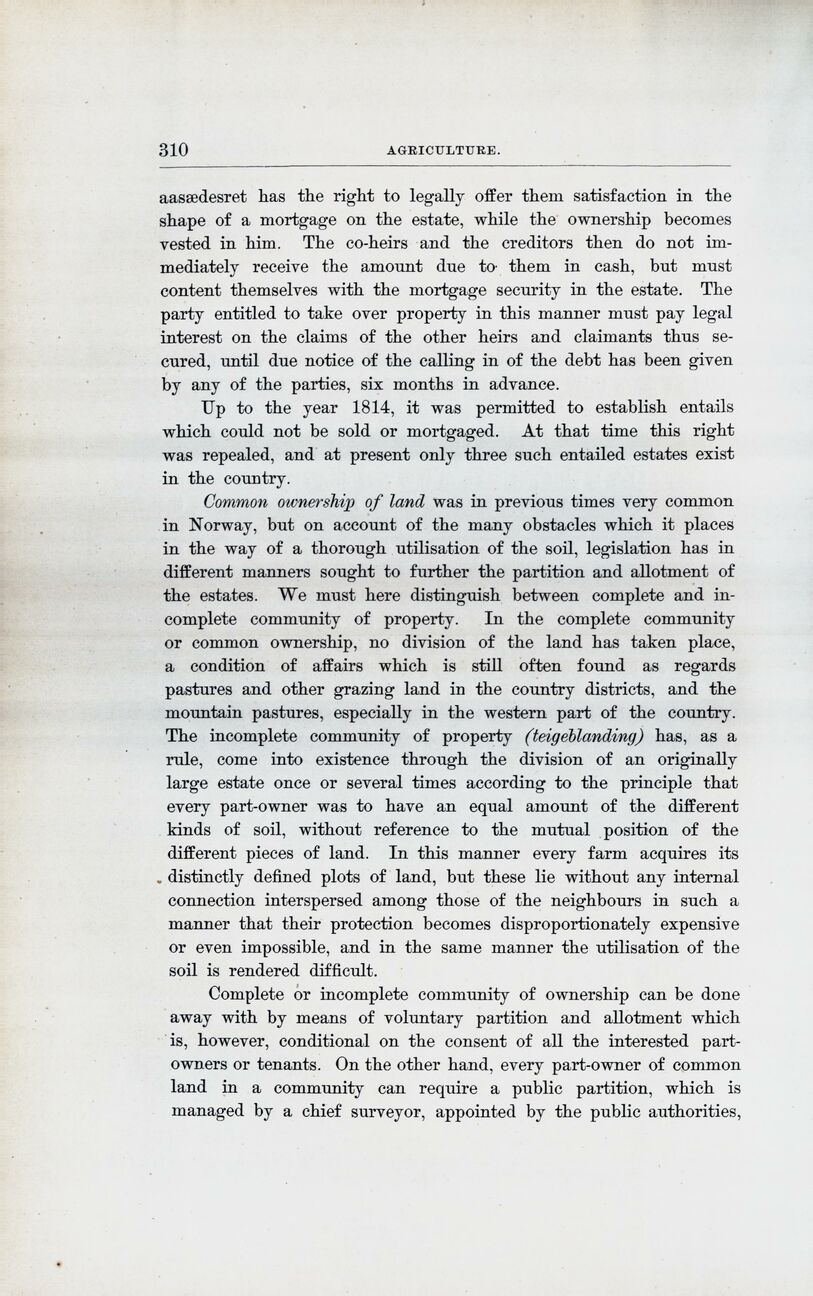
Full resolution (JPEG) - On this page / på denna sida - Agriculture, by G. Tandberg

<< prev. page << föreg. sida << >> nästa sida >> next page >>
Below is the raw OCR text
from the above scanned image.
Do you see an error? Proofread the page now!
Här nedan syns maskintolkade texten från faksimilbilden ovan.
Ser du något fel? Korrekturläs sidan nu!
This page has been proofread at least once.
(diff)
(history)
Denna sida har korrekturlästs minst en gång.
(skillnad)
(historik)
aasædesret has the right to legally offer them satisfaction in the
shape of a mortgage on the estate, while the ownership becomes
vested in him. The co-heirs and the creditors then do not
immediately receive the amount due to them in cash, but must
content themselves with the mortgage security in the estate. The
party entitled to take over property in this manner must pay legal
interest on the claims of the other heirs and claimants thus
secured, until due notice of the calling in of the debt has been given
by any of the parties, six months in advance.
Up to the year 1814, it was permitted to establish entails
which could not be sold or mortgaged. At that time this right
was repealed, and at present only three such entailed estates exist
country.
Common ownership of land was in previous times very common
in Norway, but on account of the many obstacles which it places
in the way of a thorough utilisation of the soil, legislation has in
different manners sought to further the partition and allotment of
the estates. We must here distinguish between complete and
incomplete community of property. In the complete community
or common ownership, no division of the land has taken place,
a condition of affairs which is still often found as regards
pastures and other grazing land in the country districts, and the
mountain pastures, especially in the western part of the country.
The incomplete community of property (teigeblanding) has, as a
rule, come into existence through the division of an originally
large estate once or several times according to the principle that
every part-owner was to have an equal amount of the different
kinds of soil, without reference to the mutual position of the
different pieces of land. In this manner every farm acquires its
distinctly defined plots of land, but these lie without any internal
connection interspersed among those of the neighbours in such a
manner that their protection becomes disproportionately expensive
or even impossible, and in the same manner the utilisation of the
soil is rendered difficult.
Complete or incomplete community of ownership can be done
away with by means of voluntary partition and allotment which
is, however, conditional on the consent of all the interested
part-owners or tenants. On the other hand, every part-owner of common
land in a community can require a public partition, which is
managed by a chief surveyor, appointed by the public authorities,
<< prev. page << föreg. sida << >> nästa sida >> next page >>